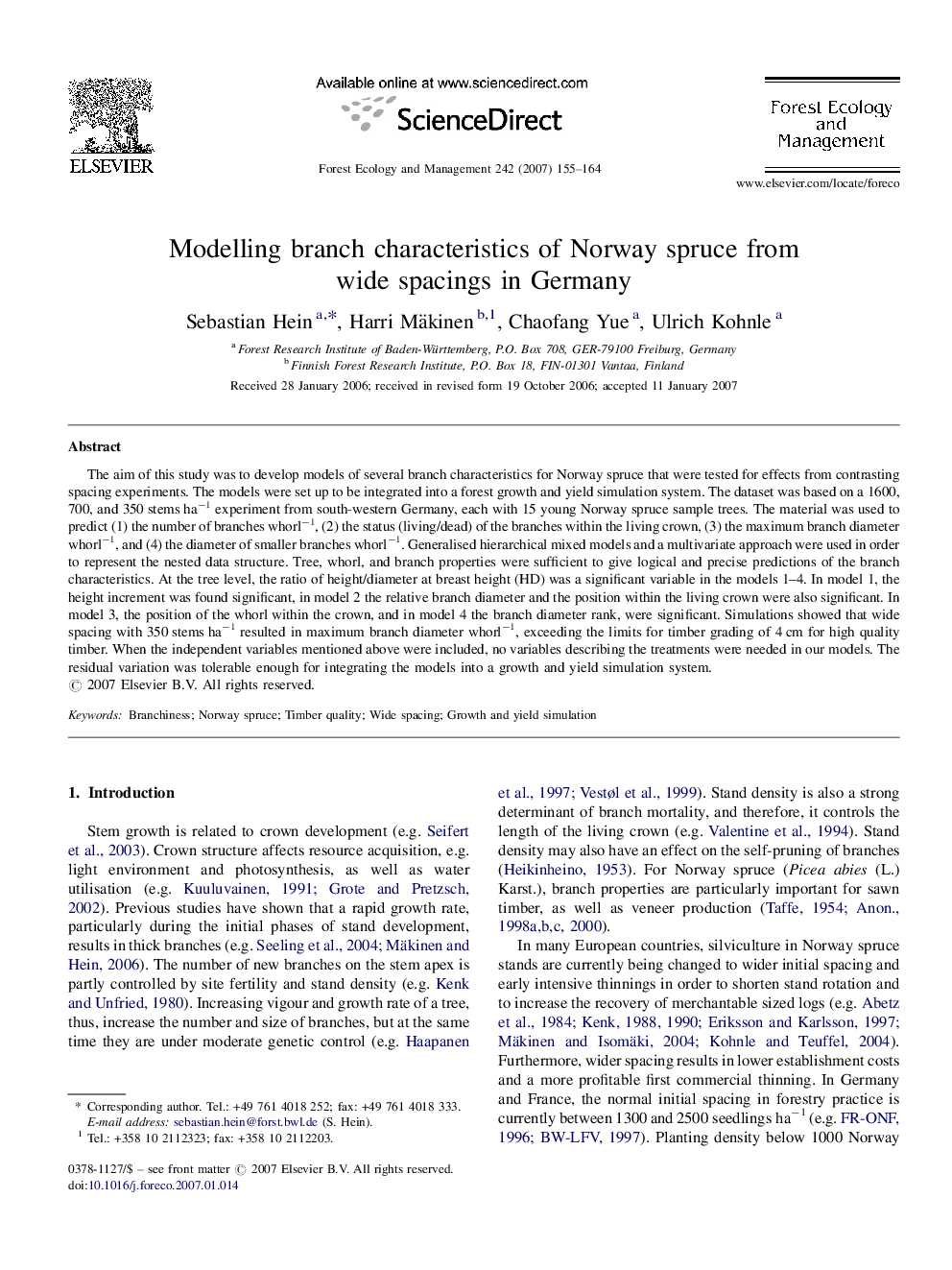| Article ID | Journal | Published Year | Pages | File Type |
|---|---|---|---|---|
| 90626 | Forest Ecology and Management | 2007 | 10 Pages |
The aim of this study was to develop models of several branch characteristics for Norway spruce that were tested for effects from contrasting spacing experiments. The models were set up to be integrated into a forest growth and yield simulation system. The dataset was based on a 1600, 700, and 350 stems ha−1 experiment from south-western Germany, each with 15 young Norway spruce sample trees. The material was used to predict (1) the number of branches whorl−1, (2) the status (living/dead) of the branches within the living crown, (3) the maximum branch diameter whorl−1, and (4) the diameter of smaller branches whorl−1. Generalised hierarchical mixed models and a multivariate approach were used in order to represent the nested data structure. Tree, whorl, and branch properties were sufficient to give logical and precise predictions of the branch characteristics. At the tree level, the ratio of height/diameter at breast height (HD) was a significant variable in the models 1–4. In model 1, the height increment was found significant, in model 2 the relative branch diameter and the position within the living crown were also significant. In model 3, the position of the whorl within the crown, and in model 4 the branch diameter rank, were significant. Simulations showed that wide spacing with 350 stems ha−1 resulted in maximum branch diameter whorl−1, exceeding the limits for timber grading of 4 cm for high quality timber. When the independent variables mentioned above were included, no variables describing the treatments were needed in our models. The residual variation was tolerable enough for integrating the models into a growth and yield simulation system.
